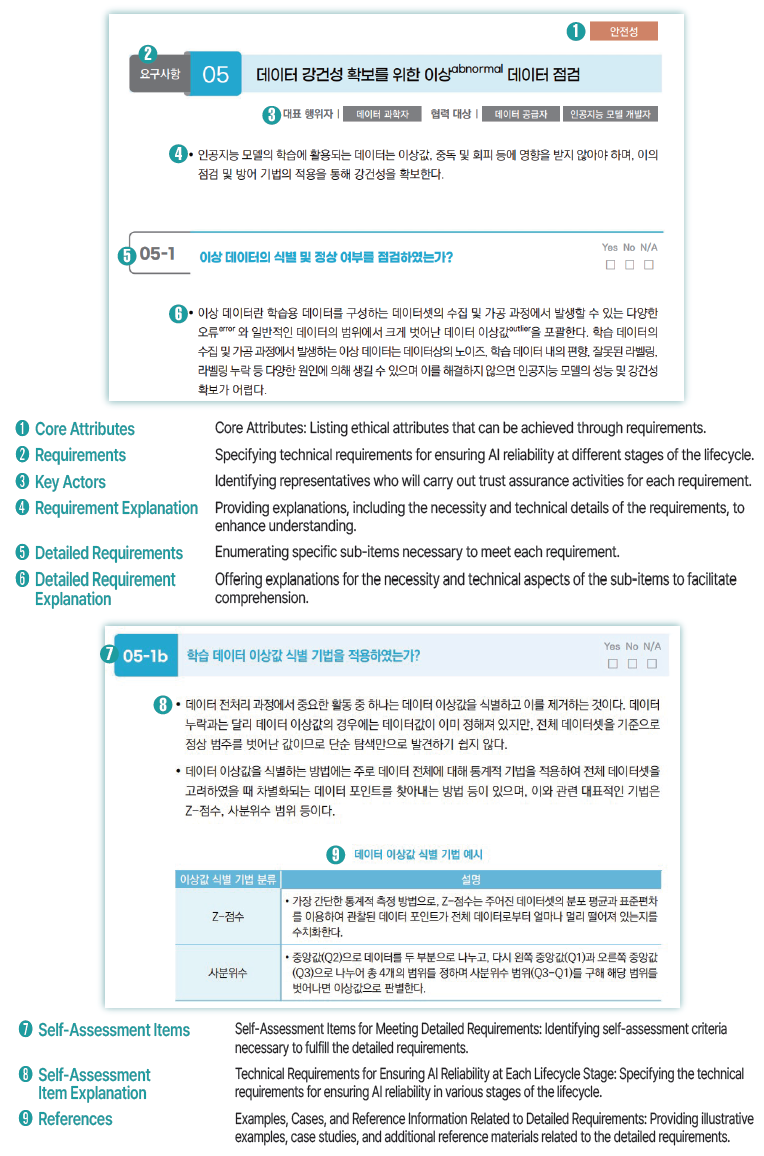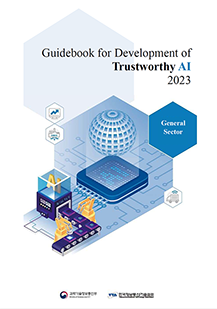
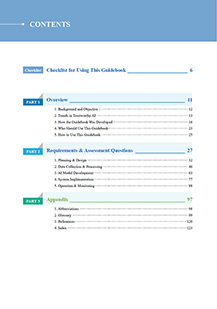
Guidebook for Trustworthy AI(General) - Guidebook for Trustworthy AI(Sector)
Guidebook for Trustworthy AI(General) - Guidebook for Trustworthy AI(Sector)
-
Level 1
 Guidebook for Trustworthy
Guidebook for Trustworthy
AI(General) -
Level 2





 Guidebook for Trustworthy AI(Sector)
Guidebook for Trustworthy AI(Sector)
1. Guidebook for Trustworthy AI(General)
Providing 15 development requirements and 67 verification items to be used as reference materials for ensuring trustworthiness in the process of developing AI products and services
Ensuring high relevance with key requirements of AI Ethics Standards*, Reflecting International Requirements for Ensuring AI trustworthiness**
* Applying the 10 key requirements of “AI Ethics Standards” and concluded with 'respect for diversity', 'liability', 'safety', and 'transparency' as the essential requirements and assessment questions from a technical perspective.
** Deriving and concretizing technical requirements based on policies, recommendations, and standards announced by standardization bodies, technical organizations, international entities, and major nations for ensuring AI trustworthiness.
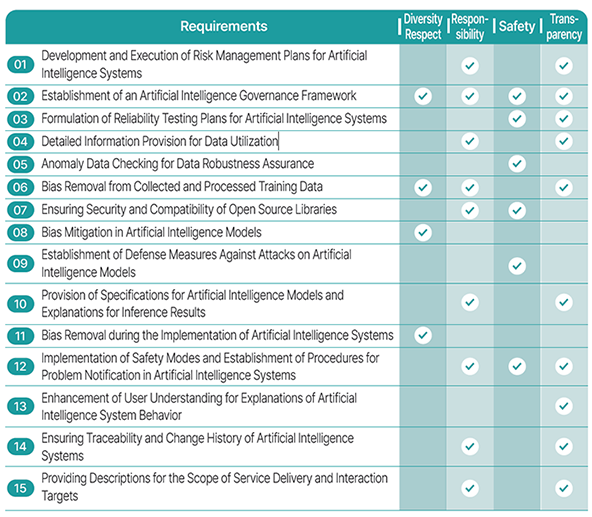
2. Guidebook for Trustworthy AI(Sector)
Providing sector-specific specialized use cases based on requirements and assessment questions of the 'Guidebook for Trustworthy AI(General)' to enhance practical use
Currently('23), 'Guidebook for Trustworthy AI' for the 'Public & Social,' 'Autonomous Driving,' and 'Medical' sectors has been provided. In addition, 'Generative AI,' 'Smart Security,' and 'Hiring' sectors-specific 'Guidebook for Trustworthy' AI is going to be provided in the first half of next year ('24)
Guidebook for Trustworthy AI(Sector) Coverage
-
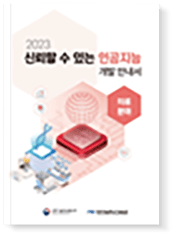 Medical
Medical
'Machine Learning-enabled Medical Devices (MLMD) inclduing disease diagnosis/prediction and medical imaging software, etc.
-
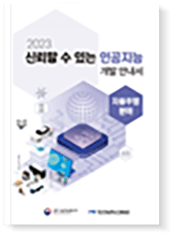 Autonomous Driving
Autonomous Driving
Autonomous driving system including autonomous driving algorithm (e.g. judgment/control system based on cognitive results)
-
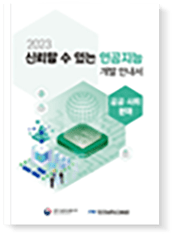 Public & Social
Public & Social
Government to Customer (G2C) and Business to Government (B2G) AI services
-
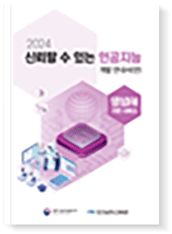 Generative AI
Generative AI
AI services that provide content(e.g. texts and images) based on AI generation technologies
-
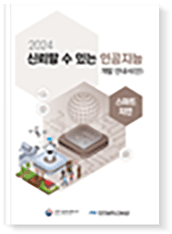 Smart Security
Smart Security
CCTV video contents-based smart security AI services (e.g. crime detection)
-
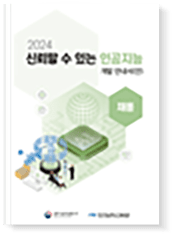 Hiring
Hiring
User-face-to-face hiring services based on AI technologies
Recommend selecting appropriate sector-specific requirements and assessment questions considering the characteristics of AI services during AI trustworthiness assurance activities
Structure of the Guidebook for Trustworthy AI Development
